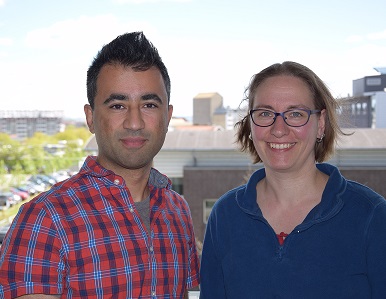
Last week, the Danish Council for Independent Research announced who have been selected to receive funding from their latest call.
In 2017, the Danish Council for Independent Research will fund 200 new research projects - two of which are at Department of Computer Science, Aarhus University. Congratulations to Ira Assent and Peyman Afshani, who each receive DKK 5.8 million for their research.
Data Science on the Desktop
Technology and production call (FTP)
DKK 5.867.899
Project description: Data science develops methods for analyzing data collected from applications as diverse as business decision making, genome analysis, or movie recommendations. The promise is that this will allow us to understand the (digital) world around us to a much better degree. The current solutions, however, are still designed for single core computers. In modern laptops or desktop computers, however, we have access to several cores, and can even use the graphics card for non-graphical computations. In this project, we exploit the enormous potential for fast and scalable data science by creating solutions that make use of the compute power available in standard computers. We develop general strategies that allow us to make existing solutions much faster by using more of the available hardware resources. We build and evaluate prototypes to demonstrate dramatically faster data science results on standard computers.
Modern Challenges in Geometric Data Structures
Nature and universe call (FNU)
DKK 5.832.559
Project description: Computer science is a discipline that offers solutions for problems that require processing, storing, or querying data. Computational geometry is among its important domains and it
builds the theoretical and practical foundations of handling geometric data. Geometric data comes from very diverse sources, e.g., geographical information systems, robotics, computer graphics, abstract data such as database records, and textual data. As our reliance on digital systems grows, it becomes increasingly important for geometric algorithms to keep up both with the increasing volume and diversity of data. We address modern issues that stem from increased data diversity and volume within the context of geometric data structures, such as performing more complex queries compared to what could be done previously, and handling more diverse data sets.